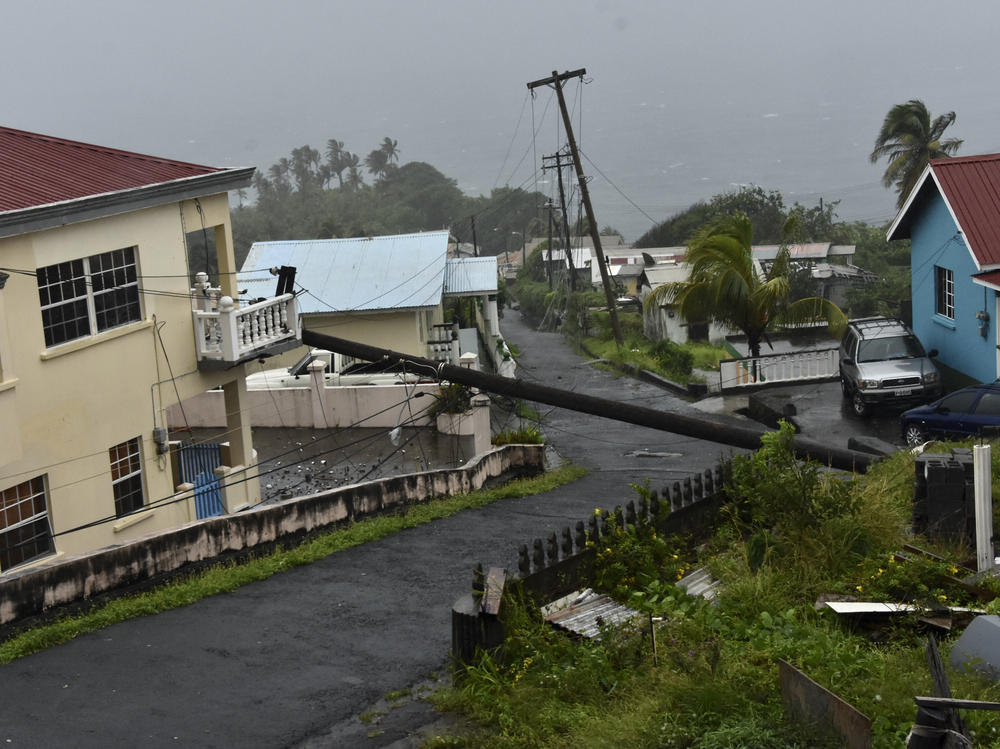Section Branding
Header Content
Florida's Governor Issues State Of Emergency As Tropical Storm Elsa Closes In
Primary Content
Tropical Storm Elsa is expected to drench Cuba and Jamaica on Sunday before tracking towards Florida on Monday. The storm has already battered the eastern Caribbean and could bring dangerous conditions to other island nations before making its way to the mainland.
Forecasters say up to 15 inches of rain could fall in parts of Cuba, Haiti and Jamaica, with some areas picking up 4 to 10 inches.
Flash flooding and mudslides are possible throughout the region and storm surges are expected to be 3 to 5 feet above normal tide levels along the southern coast of Cuba, according to the National Hurricane Center.
The White House announced on Sunday that President Biden had declared that an emergency exists in Florida, and ordered federal assistance to supplement state, tribal and local response efforts due to the emergency conditions resulting from Elsa.
On Saturday, Florida Gov. Ron DeSantis declared a state of emergency for 15 counties potentially in the path of the tropical storm, including Miami-Dade, where search and rescue operations at the site of the Surfside condo collapse were paused as crews raced to demolish the portion of the building that still stands ahead of the storm.
DeSantis urged citizens to pay attention to weather advisories in the next few days, given that the storm's specific path through Florida remains uncertain.
"While we continue to provide resources to support the response at Surfside, impacts from Elsa will begin affecting the Florida Keys and portions of southern Florida as early as Monday," DeSantis said in a statement accompanying the state of emergency. "All Floridians in the potential path of this storm need to prepare for the risk of isolated tornadoes, storm surge, heavy rainfall and flash flooding."
Elsa was downgraded from a Category 1 hurricane to a tropical storm Saturday morning — but not before causing widespread damage across islands in the eastern Caribbean on Friday.
The Associated Press reports that Barbados was one of the hardest hit islands in the region, with more than 1,100 people reporting damaged houses, including 62 homes that had completely collapsed.
At least three people were killed as the storm ripped through the eastern Caribbean.
Copyright 2021 NPR. To see more, visit https://www.npr.org.

